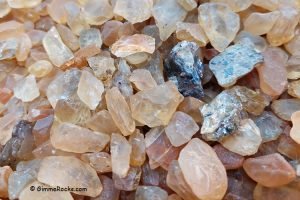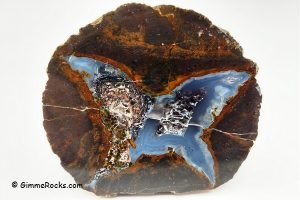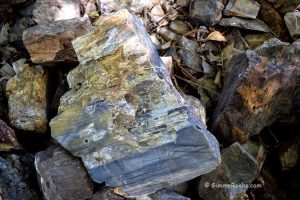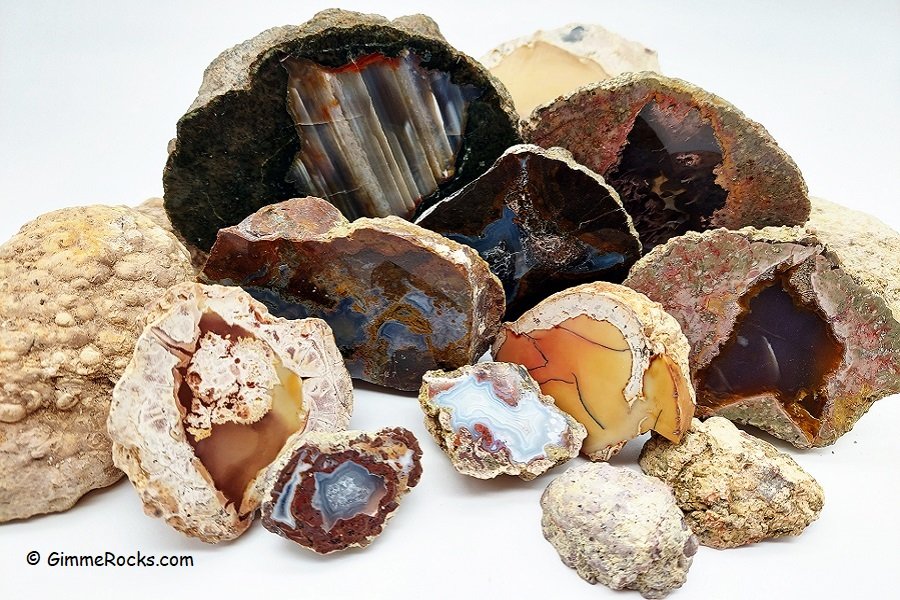
Thundereggs is designated as the official state rock of Oregon
Thunderegg, also known as lithophysae, is a spherical nodule-like rock formation that ranges in shape, size, exterior color, and inner content. It is usually filled with agate and jasper surrounded by a lumpy rhyolite shell. Also, opal, calcite, barite, gypsum, quartz, as well as other minerals can be found inside its core.
Most of the specimens vary between two and six inches in size. However, rocks up to three-five feet in diameter weighing over a ton might be found.
The color of the lumpy exterior surface varies from beige to reddish-brown or dark gray.
Various inclusions, colors, and patterns create an individual appearance for each specimen. Cutting the rough-looking nodules can surprise you by revealing truly beautiful inner content.
How Thunder Eggs Are Formed?
Thundereggs formed within hollow pockets of rhyolitic tuff, a solid rock made from volcanic ash and other sediments during the process of solidification. Those cavities served as molds that over a period of millions of years were filled with groundwater that percolated through the silica-rich volcanic ash, bringing and depositing minerals. As the water evaporated, the silica crystallized and attached to surrounding rhyolite, forming exterior rind. Depending on types of dissolved minerals carried by groundwater, inner core can become agate, jasper, opal, or other quartz varieties.
Hollow thunder eggs are known as geodes.
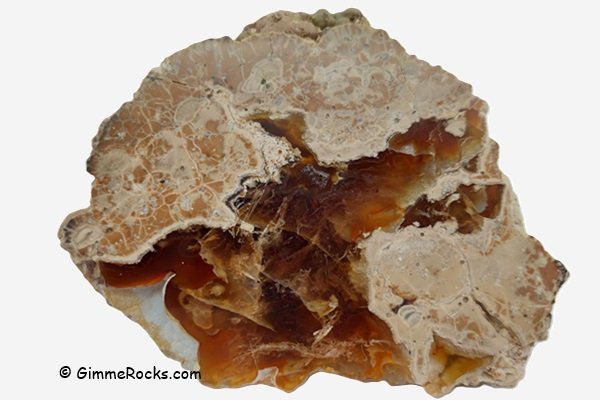
Legends - Why is it Called a Thunder Egg?
The thunder egg might owe its name to a tale of Native Americans of Central Oregon. According to folklore, those were eggs of the legendary creatures - thunderbirds. Thunderbirds have a significant place in the culture of Native Americans, especially ones living in Eastern Canada, the Northeastern US, and Great Lakes area.
The war among spirits living at Mount efferson and Mount Hood helped spread those unique minerals around. They launched large numbers of thundereggs at each other in rage during the thunderstorms thus allowing humans to find the rocks left after the battle.
Lewis Renton from Portland was the first rock collector who used this term in his publication in 1936.
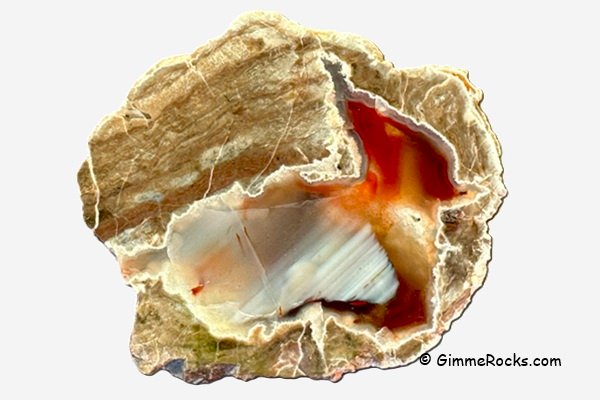
Are Thundereggs Rare?
Thundereggs can be found in many western states of the United States. However, the most popular free and fee-collecting sites are located in Oregon. It is not surprising that the thunderegg is became the official state rock in 1965.
The best productive areas are located in Central and Eastern regions of Oregon.
Thundereggs vs Geodes
Thundereggs are often mistaken for geodes, but with distinct differences. Unlike geodes, which are hollow and lined with crystals, thundereggs are usually solid, with interiors filled with a variety of minerals such as agate, jasper, opal, or quartz.
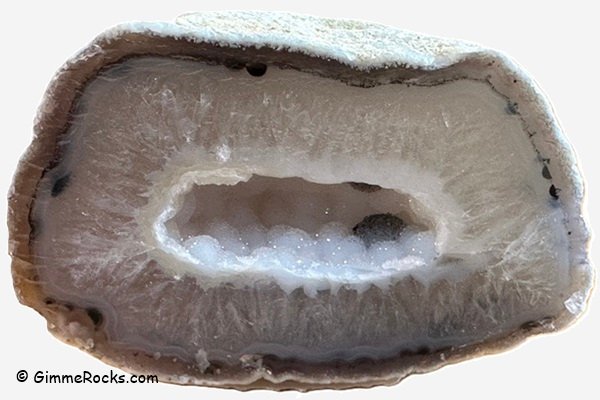
How to Spot Thundereggs?
Thundereggs can be easily distinguished from other rocks by their round and lumpy exteriors. Generally, thundereggs lie relatively close to the ground surface, embedded in the tuff clay. Throughout the time, the tuff has been decayed to soft mud and clay that make thundereggs visible.
What is the Value of Thundereggs?
A polished thunderegg price can range from a few to a hundred dollars. Prices are the highest for the specimens with cores containing opal, moss or plumes agates, big in size and having unusual color patterns can be up to a few hondred and even thousand dollars.
Thunderegg Lapidary Use
To reveal inner core of thunderegg, they should be cut in half. Also, they are used for cutting cabochons and polishing them.
You May Also Like
Renton, J. L., 1936, Opal or agate filled "Thunder eggs": The Mineralogist, v. 4, no. 1, p. 12.

